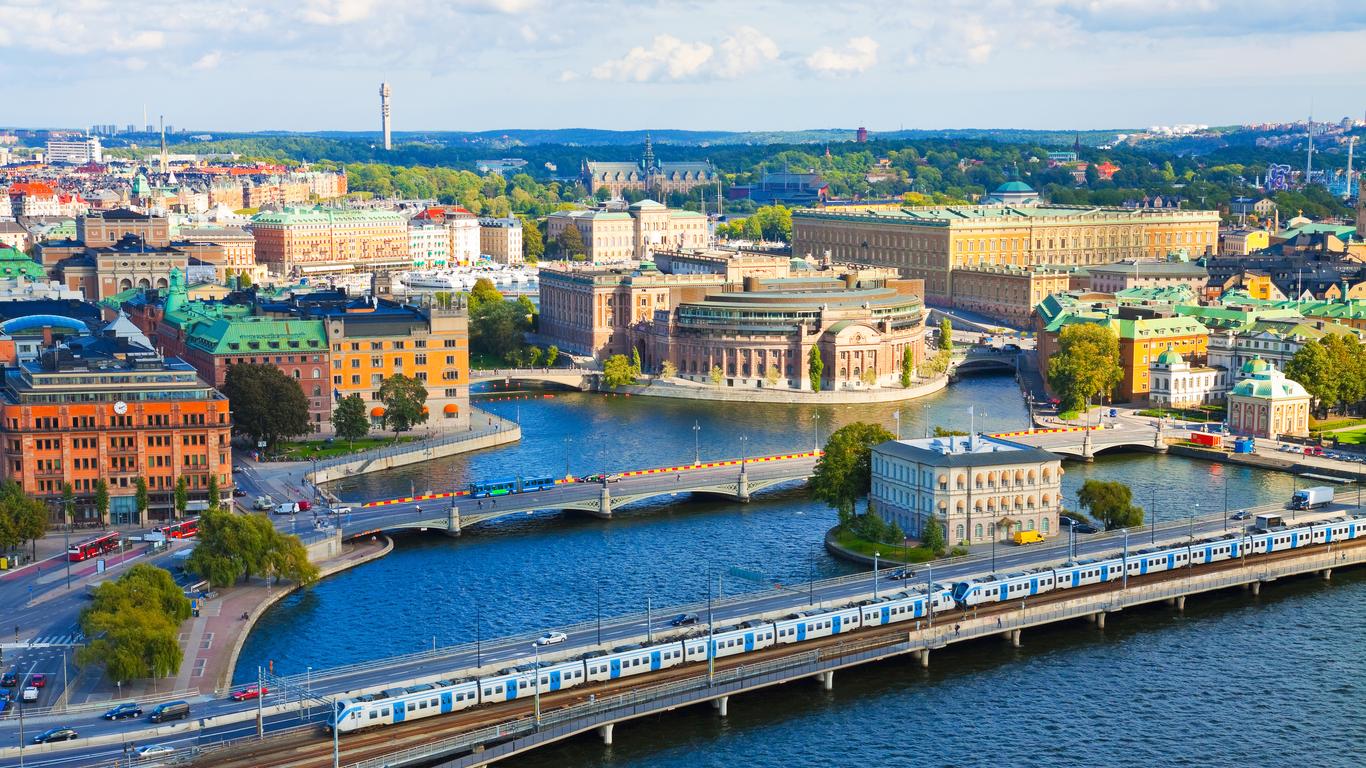Stockholm’s Old Town, Gamla Stan, is one of the best preserved medieval centres in Europe and where the city was founded in 1252. It sprawls across the island of Stadsholmen, with its cobblestone streets and North Germanic architecture creating an atmospheric open-air museum.
Västerlånggatan and Österlånggatan are Gamla Stan’s main streets, packed with restaurants, cafes, bars and boutiques, while Mårten Trotzigs Gränd is its narrowest at just 90 centimetres wide in some parts. The district is home to the Stockholm Cathedral, built in a Swedish Brick Gothic style and featuring a famous wooden statue of Saint George and the Dragon, as well as a painting titled “Vädersolstavlan” which is the oldest known image of Stockholm. The Nobel Museum is located adjacent and details the history of the prize, together with the contributions made by its recipients. It lies on the edge of Stortorget, the oldest square in Stockholm, which is lined with golden coloured merchants’ houses and the elegant Stock Exchange Building. Undoubtedly the grandest building in Gamla Stan is the baroque Royal Palace which dates to the 18th century and boasts more than 1,000 rooms. It houses three museums, including one dedicated to royal family artefacts, another to antiquities and a third detailing the history of the old castle Tre Kronor which once stood here. The island of Riddarholmen is situated to the south, renowned for its 13th century church which serves as the burial ground of Swedish monarchs, while to the north of Gamla Stan is Helgeandsholmen where the Riksdagshuset parliament and Museum of Medieval Stockholm are found.
Gamla Stan is easily accessed from the Gamla Stan T-bana Station on its western edge, as well as by public buses which stop along its periphery. The majority of streets on the island are pedestrianised and best explored on foot.
Stockholm was founded as the new capital of Sweden in the 13th century following a heavy attack from armed gangs at the previous capital of Sigtuna. The area that is now known as Gamla Stan was referred to simply as Själva Staden "the city itself” up until the mid-19th century, being renamed in the early 20th century as the surrounding rural land was transformed into the modern city seen today.





